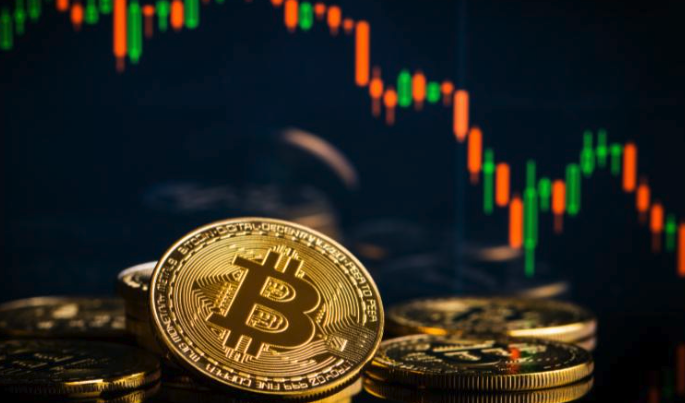
Bitcoin Plunges on August 5th: Should We Expect a Bullish or Bearish Trend? | TrendX Research Institute
On August 5, 2024, the Bitcoin market once again experienced a significant price fluctuation. Within a day, the price of Bitcoin plummeted, triggering widespread market attention and discussion. This plunge not only caught investors off guard, but also prompted market analysts to delve into the reasons behind it and the potential future development trends. In this article, we will interpret the three bearish warning signals behind the Bitcoin plunge and also discuss six bullish signals, in order to provide investors with a more comprehensive perspective.
Three Bearish Warning Signals
Market Sentiment Shift
Market sentiment plays a crucial role in cryptocurrency investment. Prior to the Bitcoin plunge, there was an atmosphere of excessive optimism in the market. Many investors and analysts were anticipating Bitcoin to continue breaking historical highs. However, rapid shifts in market sentiment often lead to significant price fluctuations. Negative news on social media, pessimistic reports in mainstream media, and warnings from prominent investors can swiftly alter market sentiment, leading to panic selling.
In early August, influential cryptocurrency commentators on the social media platform Twitter (now X), such as @CryptoWhale and @TheMoon, garnered significant retweets and discussions after publishing several analyses on the possibility of a Bitcoin market bubble. Simultaneously, articles questioning Bitcoin's overvaluation were published in The Wall Street Journal and Financial Times. These statements and reports quickly spread, triggering investor panic and massive sell-offs in the market.
Technical Indicators Issuing Warnings
Technical analysis is a commonly used method in the cryptocurrency market to predict market trends by analyzing price charts and various technical indicators. Prior to the Bitcoin plunge, several key technical indicators had already issued warning signals. For instance, the Relative Strength Index (RSI) indicated that Bitcoin had entered the overbought zone, suggesting a potential market correction. Additionally, the crossover of moving averages also indicated a potential price decline.
In early August, a "death cross" formed on the daily chart of Bitcoin – the 50-day moving average crossed below the 200-day moving average, a typical bearish signal. Furthermore, the Relative Strength Index (RSI) had already exceeded 70, entering the overbought zone a week before the plunge. These technical indicators indicated an overheated market and the potential for a price correction. On August 5th, these technical signals were validated by the market as Bitcoin's price rapidly declined.
Changes in the Macro-Economic Environment
Changes in the macro-economic environment have also significantly impacted the Bitcoin market. Recently, global economic uncertainty has increased, and the Federal Reserve's monetary policy has become more restrictive, exerting pressure on high-risk assets such as Bitcoin. In particular, the Fed's interest rate hikes have led to capital outflows from high-risk assets towards safer investment targets, triggering a sell-off in the cryptocurrency market, including Bitcoin.
At the end of July, the Fed announced another 25 basis point interest rate hike and indicated the possibility of further hikes in the future. This news sparked concerns in the market regarding high-risk assets, leading to a sell-off in the cryptocurrency market, including Bitcoin. Meanwhile, the European Central Bank also announced its intention to maintain a tight monetary policy to address inflationary pressures. These changes in the macro-economic environment further heightened market uncertainty, prompting investors to withdraw from high-risk assets and shift towards safer havens such as gold and US Treasury bonds.
Six Bullish Signals
Long-Term Demand Increase
Despite the drastic short-term fluctuations in Bitcoin, the market's demand for Bitcoin remains strong in the long term. Particularly in economically unstable regions, the demand for Bitcoin as a store of value continues to increase. Additionally, an increasing number of institutional investors are beginning to include Bitcoin in their asset allocations, providing further support for Bitcoin's long-term growth.
In some Latin American countries such as Argentina and Venezuela, due to extreme instability in their national currencies and persistently high inflation rates, the demand for Bitcoin among residents has significantly increased. Data shows that Bitcoin trading volume in Argentina has grown by nearly 200% over the past year. Furthermore, globally renowned investment institutions such as Fidelity Investments and BlackRock have begun incorporating Bitcoin into their asset portfolios, further driving market demand for Bitcoin.
Advancements in Technological Development
The continuous development of Bitcoin and its underlying technology, blockchain, is also a crucial bullish signal. Technological upgrades to the Bitcoin network, such as the widespread adoption of the Lightning Network, have greatly improved the speed and efficiency of Bitcoin transactions. Additionally, other innovations such as decentralized finance (DeFi) and the development of smart contracts have brought new application scenarios and growth opportunities to Bitcoin and the entire cryptocurrency market.
Improvement in Policy Environment
The improvement in the policy environment is also an important bullish signal for Bitcoin's future. Although countries worldwide have varying attitudes towards cryptocurrency regulation, the overall trend is moving towards clearer and more friendly regulations. An increasing number of countries are beginning to recognize the legal status of Bitcoin and are implementing corresponding regulatory frameworks to promote its healthy development. In early 2024, the US Securities and Exchange Commission (SEC) approved a Bitcoin exchange-traded fund (ETF), marking a significant milestone in the development of the Bitcoin market. The launch of a Bitcoin ETF will provide more traditional investors with a pathway to enter the Bitcoin market, increasing market liquidity and stability.
Furthermore, Germany recently passed a law allowing institutional investors to hold up to 20% of their assets in cryptocurrencies. Japan has further regulated the operation of cryptocurrency exchanges to ensure market transparency and security. These improvements in the policy environment help strengthen market confidence in Bitcoin and drive its long-term price increase. The adoption of positive cryptocurrency regulation is steadily growing. Key evidence supporting the potential for a supportive US government for cryptocurrencies includes the increasing amount of Bitcoin held by US corporations, bipartisan support for cryptocurrencies, and the implementation of fair value accounting rules for Bitcoin in 2025. While there may be some short-term obstacles, the overall trend remains positive and strong.
Impact of the Gold Market
Fluctuations in the gold market often have a significant impact on the Bitcoin market. As a safe-haven asset, gold often outperforms other high-risk assets in risk-averse markets. Currently, due to geopolitical conflicts, uncertain US elections, and yen carry trades, macroeconomic uncertainty is high. While Bitcoin may follow gold, high-risk altcoins may not. In 2019, when gold broke through once again, Bitcoin also reached a high point. This pattern reappeared in March 2024, demonstrating the correlation between gold and Bitcoin. Although the market may cool off in the short term, the long-term upward trend of gold provides support for Bitcoin.
Inflow of Stablecoins
Despite the plunge in cryptocurrency prices, the supply of stablecoins is approaching an all-time high (ATH). This year, the supply of stablecoins has grown by over 25%. As capital continues to flow into the cryptocurrency market, it becomes difficult to sustain a long-term bearish outlook. The increase in the supply of stablecoins indicates that more liquidity is flowing into the cryptocurrency market.
Stablecoins represent capital that can be invested in cryptocurrency assets. Historically, an increase in supply has often foreshadowed a rise in cryptocurrency prices. While interest rate cuts may have a negative short-term impact on high-risk assets, the outlook for stablecoins is bullish in the long term. With the decline in traditional asset yields, on-chain returns become more attractive. This may promote the expansion of stablecoins in the coming months.
Record Global Debt
Global debt reached a historic high of $315 trillion earlier this year. With over 50 countries holding elections in 2024, governments may lean towards tax cuts and cash stimulus policies. Based on the four-year liquidity cycle, the "debt issue" is expected to be based on government refinancing debt. We are currently in the "macro summer," and returns are expected to gradually rise. This phase typically leads to a "risky" macro autumn.
Conclusion
The plunge of Bitcoin on August 5th reflects the high volatility and complexity of the market. When interpreting this event, we need to recognize both the bearish warning signals that led to the plunge and the bullish signals that support Bitcoin's long-term development. The shift in market sentiment, warning signals from technical indicators, and changes in the macro-economic environment are the main reasons for this plunge, while the increase in long-term demand, technological development, and improvement in the policy environment provide strong support for Bitcoin's future development.
For investors, it is important to remain calm and rational when facing market fluctuations in the Bitcoin market. Although short-term price fluctuations are intense, Bitcoin still possesses immense potential and room for development in the long term. By thoroughly analyzing market dynamics and grasping both bearish and bullish signals, investors can better formulate investment strategies and achieve steady asset appreciation.
In summary, the market outlook for Bitcoin remains full of variables, but as long as we can accurately identify and respond to various signals, it is possible to stand firm in this challenging and opportunistic market.
Follow Us at TrendX
TrendX is a leading AI-driven Web3 trend tracking and intelligent trading platform globally, aiming to become the preferred platform for the next billion users entering the Web3 domain. By combining multidimensional trend tracking and intelligent trading, TrendX provides a comprehensive experience of project discovery, trend analysis, primary investment, and secondary trading.
Website: https://app.trendx.tech/
Twitter: https://twitter.com/TrendX_tech
Investment carries risks, and the project is for reference only. Please bear the risks on your own.



